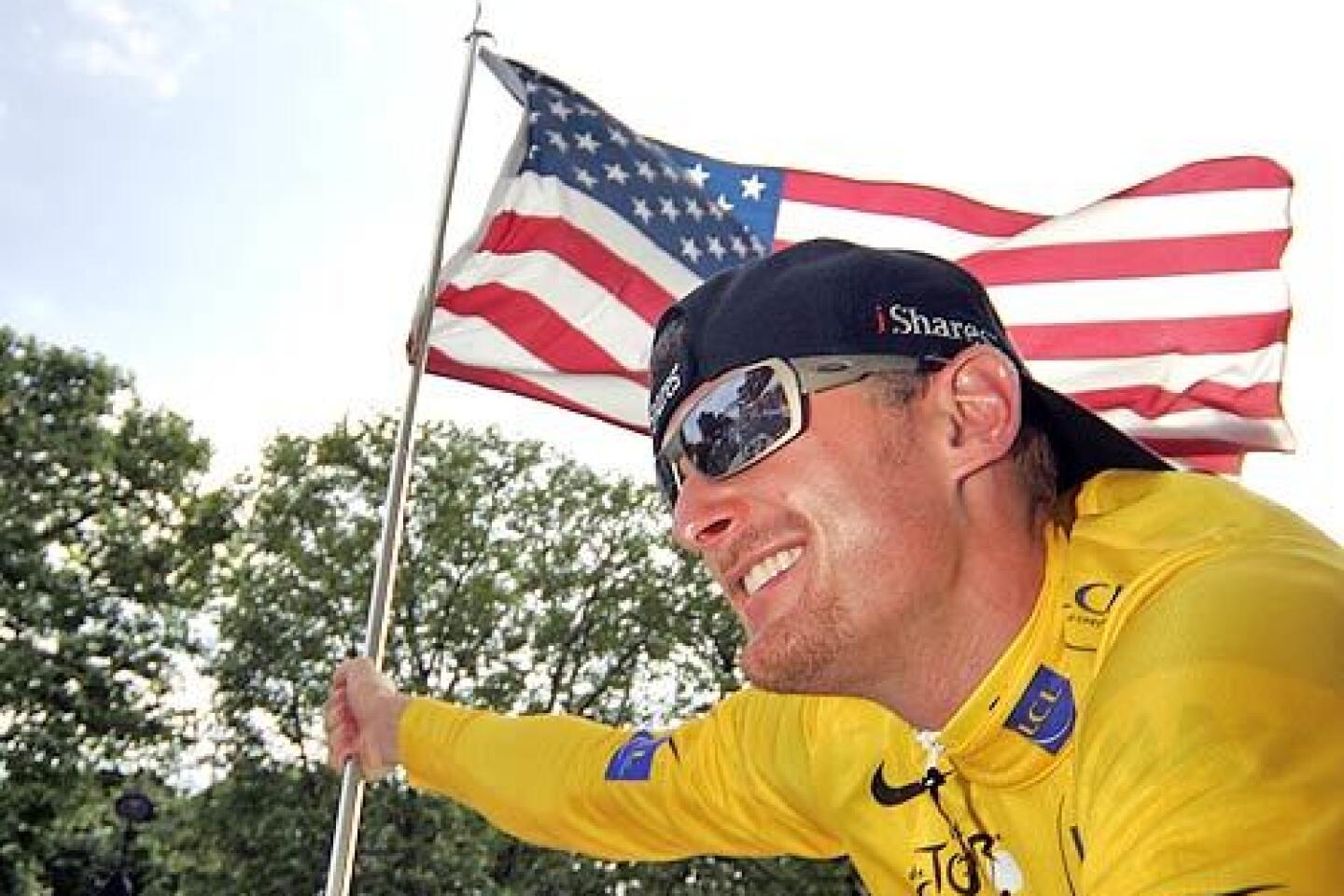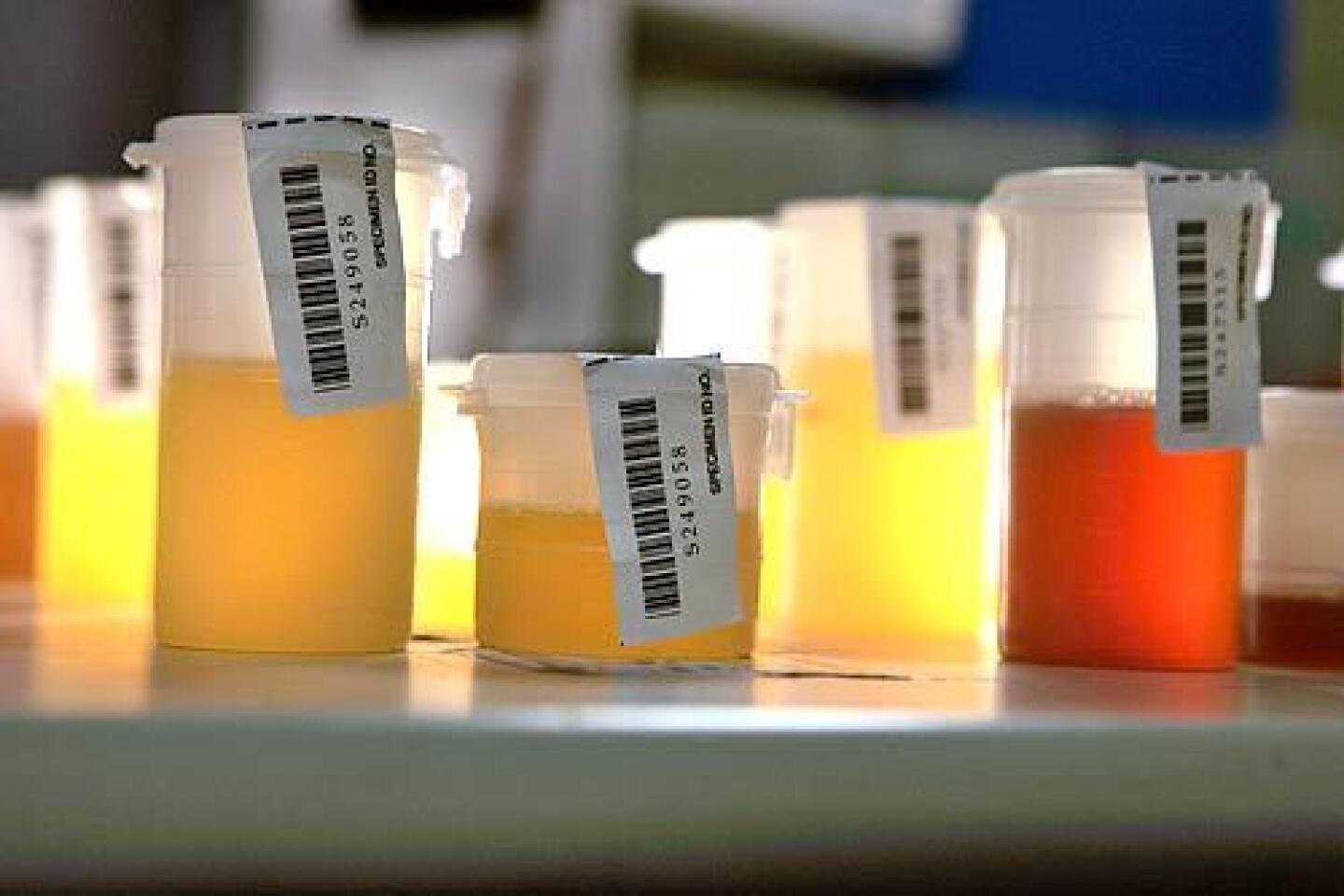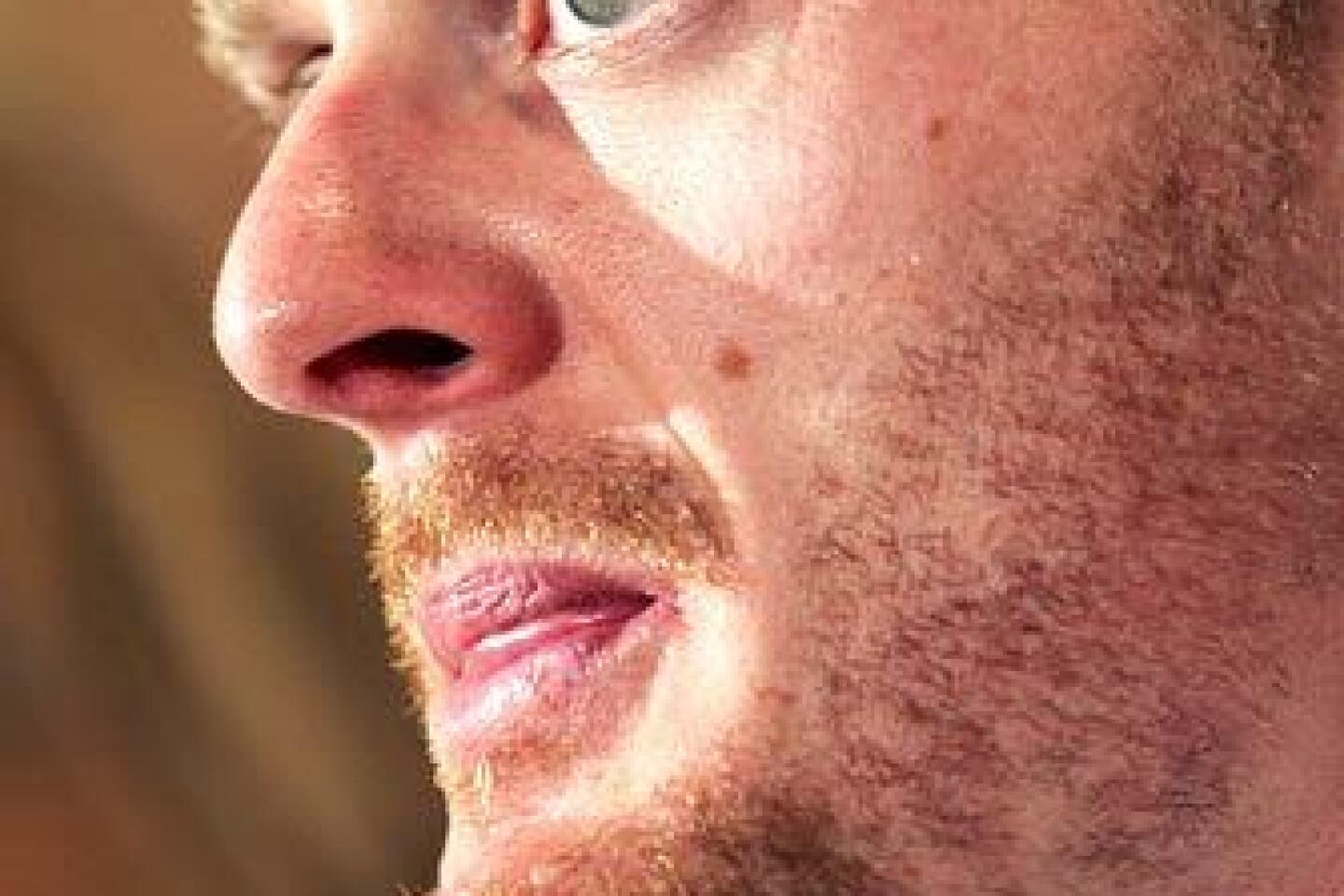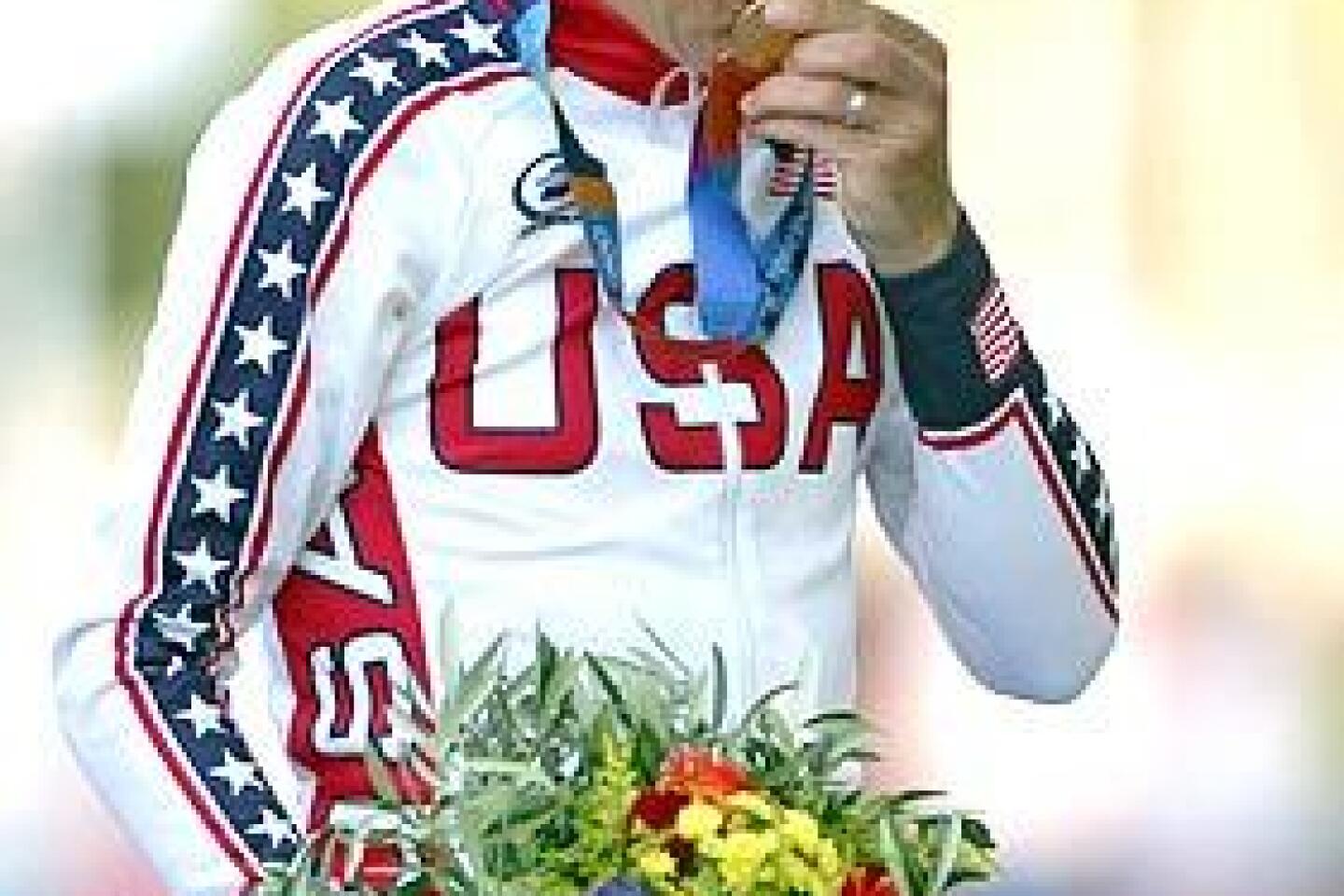Cyclist blames ‘flawed’ test
To anti-doping officials, the case against Olympic and Tour de France cyclist Tyler Hamilton for an illicit blood transfusion ranks among their greatest victories — a sanction for “intentional cheating at its most sophisticated,” in the words of Travis T. Tygart, general counsel to the U.S. Anti-Doping Agency.
To others, including independent scientists who worked on Hamilton’s defense, it underscores one of the most glaring flaws of the international anti-doping system — its reliance on scientific research performed hastily and on the cheap.
The novel blood test used to condemn Hamilton as a cheater and suspend him for two years was developed by researchers in Sydney, Australia, on a $50,000 USADA grant — that sum a fraction of what’s normally spent in medicine to develop and validate a diagnostic test.
“This test was not ready for prime time,” says Carlo Brugnara, professor of pathology at Harvard Medical School.
Brugnara was a member of the peer-review committee that approved publication of an article outlining the test in 2003. However, he felt so strongly that it was prematurely implemented in Hamilton’s case that he volunteered to testify at an arbitration hearing for the cyclist in 2005.
Hamilton, a native of Marblehead, Mass., was considered one of cycling’s toughest and cleanest riders when he came under suspicion for blood doping shortly before the 2004 Summer Olympics in Athens. He went on to win the gold medal in the individual time trial.
At Athens, the World Anti-Doping Agency and the International Olympic Committee had introduced a new field test that had to be fast-tracked for the Games. Authorities feared a rash of prohibited blood transfusions among endurance athletes seeking a boost from extra oxygen-producing red blood cells.
At the Games, Hamilton’s blood sample was declared negative, though “suspicious” for blood doping, by WADA’s Athens laboratory.
A month later, he was tested again at the Vuelta d’Espana, a grueling Spanish race akin to the Tour de France. This time, authorities said the test — performed by WADA’s lab in Lausanne, Switzerland — had identified a small concentration of foreign blood cells in his sample. He was charged with doping.
Richard W. Pound, the WADA chairman, trumpeted the results as vindication of suspicions in Athens. “We got him on the second bounce,” he crowed.
On the surface, Hamilton’s alleged violation made little sense. Athletes seeking a blood-doping boost almost certainly would transfuse from a stored supply of their own — not only because it is nearly undetectable in doping tests but also because it carries no risk of illness or infection.
Indeed, use of another person’s blood is so unlikely that one WADA scientist speculated that Hamilton must have done it accidentally. “The most likely scenario is that he meant to get his own blood but was given someone else’s,” says Michael Ashenden, a member of the Sydney team that developed the test.
Experts supporting Hamilton contend the concentration of purportedly foreign cells in his blood at Athens and the Vuelta was too low to have boosted his performance in those events — and possibly too low to be accurately measured.
They say the test results indicate that if Hamilton transfused at all, it would have been more than two months before the Olympics — a wasted effort, because performance-enhancing effects would have worn off well before the Games.
“If someone was really doping, it would be really obvious,” says David Nelson, professor of cell and molecular biology at the University of Rhode Island and a consultant on Hamilton’s defense. “But these results were wacky.”
Hamilton declined to comment for this article. On his website, he calls the tests “flawed and inaccurate” and says he “did not transfuse.”
There is little dispute the test was rushed to implementation. Sydney researchers had published results from trials on only 58 blood samples using a process known as flow cytometry when WADA summoned them to teach the technique to scientists at the Athens Olympics.
For any diagnostic test to be used in medicine, regulatory agencies often require hundreds if not thousands of trials in a variety of clinical and field settings to demonstrate reproducible results under all conditions.
“It was appalling for me to see the low bar they set,” said one of Hamilton’s expert witnesses, Dr. V.K. Gadi, a blood specialist and oncologist at the Fred Hutchinson Cancer Research Center in Seattle. “The way the test was designed and implemented would never pass muster in any other regulatory situation.”
During its first field application in Athens, the test encountered problems. The lab failed a proficiency test just before the Games, lab director Costas Georgakopoulos told The Times in an e-mail.
As a result, he said, he refused to certify Hamilton’s sample as positive for blood doping, a decision that infuriated his blood-testing team. They considered the cyclist guilty.
With the lab’s proficiency in question, Georgakopoulos said, “reporting positive cases would endanger the whole Olympic doping control program.”
Meanwhile, on opening day of the Athens Games, Ashenden sent out a blistering e-mail complaining that the Lausanne lab was “not yet capable of performing the test to an acceptable standard.”
He cited changes the lab had made in the test that might produce false positives.
Ashenden said in an interview that Lausanne had corrected all its flaws before it examined Hamilton’s sample from the race in Spain.
“Lausanne was keen to rush through the test, perhaps prematurely,” he said. “But it was only a matter of days before they started to get the results we wanted to see.”
One scientist testifying at Hamilton’s hearing contended that Australian researchers had not taken even rudimentary steps to determine how susceptible their test might be to false positives. David E. Housman, professor of biology at MIT, also told The Times in an e-mail: “This process wouldn’t cut it in the world of testing for any medical condition.”
Australian researchers had argued in published papers that false positives “do not appear to be a problem,” without showing they had investigated the issue.
That seemed a “cavalier” dismissal to D. Michael Strong, chief operating officer of Puget Sound Blood Center, a Seattle blood bank, who testified for Hamilton.
“I don’t know of a test that doesn’t have false positives,” he said in an interview. Common scientific standards require developers of diagnostic tests to identify and quantify the possible causes of false positives, Strong said.
At Hamilton’s first appeal of sanctions, arbitrator Christopher L. Campbell issued a rare written dissent, citing “a number of bizarre and inappropriate occurrences” in the case.
For example, soon after the Athens Games, anti-doping authorities hand-picked an expert panel to reexamine Hamilton’s Olympic sample. One member was a developer of the controversial blood test, an arrangement Campbell called a conflict of interest violating the “cardinal rules of drug testing.”
The panel did declare Hamilton’s Athens sample positive. However, because a confirmation sample already had been destroyed, the official negative finding stood and the cyclist retained his gold medal.
Based on tests from the Spanish race, however, Hamilton was suspended for two years.
Campbell, highly critical of the entire test validation process, said that the arbitrators’ decision to accept the test despite its deficiencies “establishes a dreadful precedent.”
Hamilton’s suspension ended in September, and he has resumed racing.
As for the feared crisis in blood doping that led to the crash implementation of the test, WADA never found it. Only two athletes have ever been declared positive, Hamilton and a second cyclist who chose not to contest his sanction.
michael.hiltzik@latimes.com
More to Read
Sign up for Essential California
The most important California stories and recommendations in your inbox every morning.
You may occasionally receive promotional content from the Los Angeles Times.



















